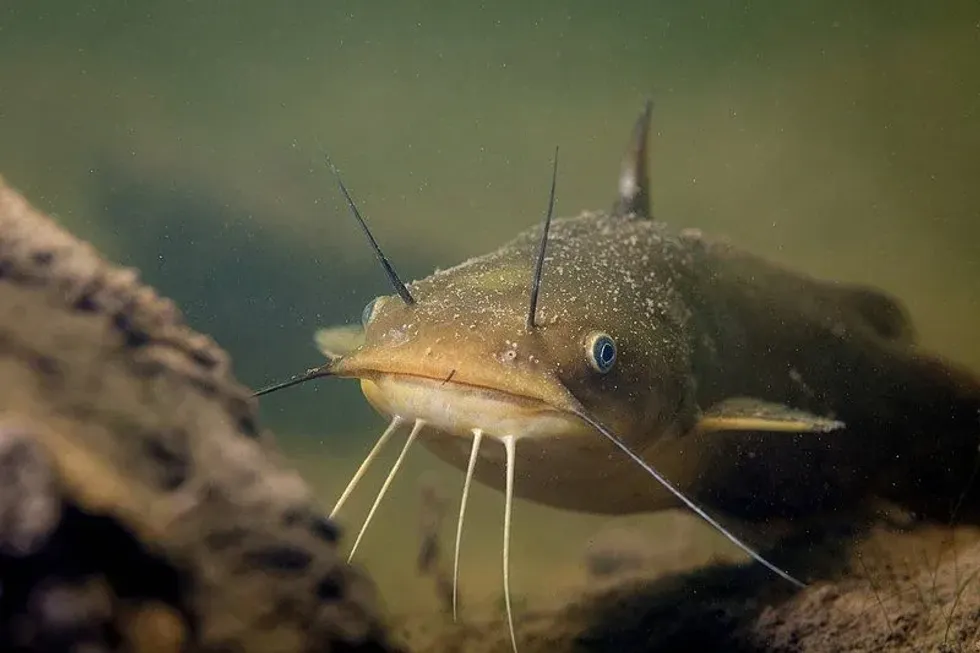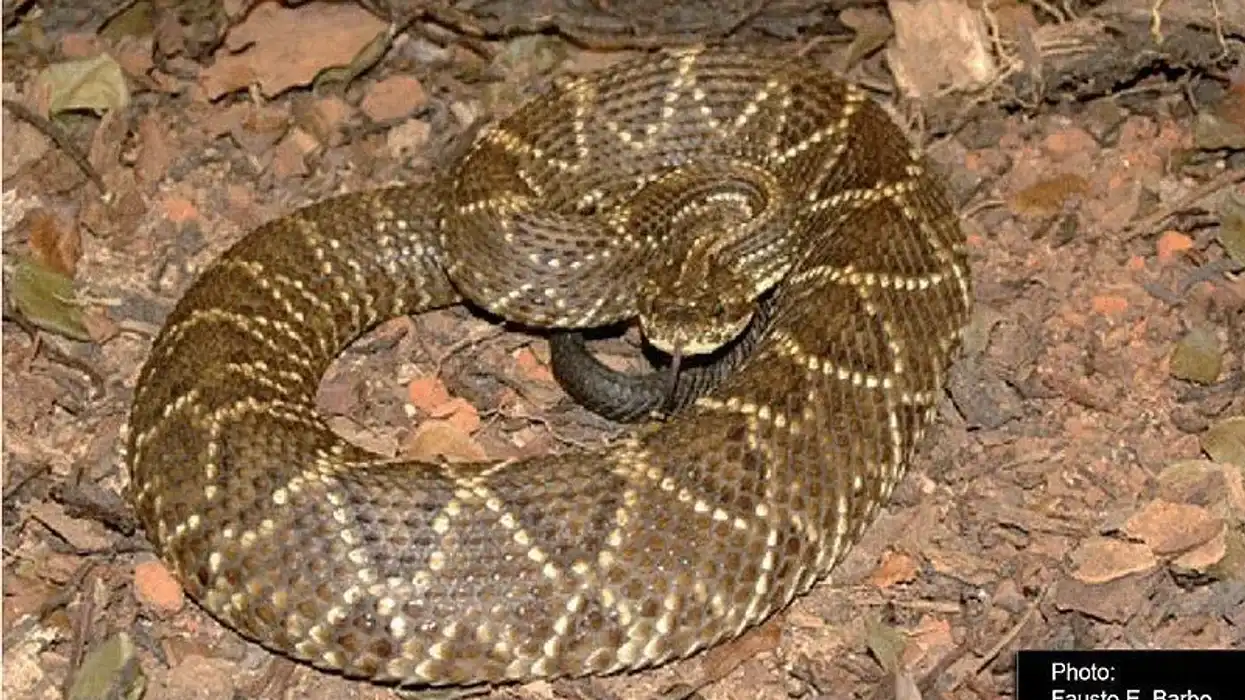Flat bullheads are a species of North American catfish that have flat heads and are found in areas encompassing Georgia and Virginia. They are small to large in size with a dark-colored body and black fins.
Their distribution is predominant in the U.S., and they depend upon small fishes and aquatic insects for food.
Look at these interesting facts; if you like these, do read our catfish facts and blue catfish facts too.
Flat Bullhead Interesting Facts
What type of animal is a flat bullhead?
The Ameiurus platycephalus is a species of North American catfish that is native to the southeastern United States, mainly the coastal areas stretching from Virginia to Georgia. This fish has a pressed head, just like its name suggests, and it usually diets on aquatic insects, small fish, and mollusks for food.
Flat bullhead catfish have a golden yellow to dark brown body with cream-colored undersides. Its sides are speckled, and its fins are black.
What class of animal does a flat bullhead belong to?
Flat bullheads (Ameiurus platycephalus) belong to the class of Actinopterygii.
How many flat bullheads are there in the world?
There is no clear estimate of the total number of these fish in the world. However, it can be assumed that they must be present in huge numbers because of their conservation status, which is listed as Least Concern in the IUCN Red List.
Where does a flat bullhead live?
Adult flat bullheads prefer to live in rivers with beds of rock, mud or sand, lakes, and ponds, whereas the younger ones prefer clear rivers and streams.
What is a flat bullhead's habitat?
The flat bullheads distribution population is generally found in the coastal plains of the Roanoke River in Virginia and in the streams on Atlantic Piedmont. They are also found in the river, lakes, and streams of Georgia, where they can easily find food.
Who do flat bullheads live with?
There is no information about flat bullhead living with either their own species or with different ones.
How long do flat bullheads live?
The average lifespan of bullhead is estimated to be somewhere around five years in the wild distribution. However, the oldest bullhead has been observed to have lived up to 10 years old.
How do they reproduce?
Breeding takes place throughout the mid-year. The average litter size of the females is somewhere in the range of 200-1740 eggs each.
What is their conservation status?
The conservation status of this fish is listed as Least Concern in the IUCN Red List.
Flat Bullhead Fun Facts
What does the flat bullhead look like?

*Please note that this is an image of a catfish and not a flat bullhead specifically. If you have an image of a flat bullhead, please let us know at hello@kidadl.com.
All flat bullheads have flattened heads. The back edge of the pectoral spine does not have sawlike teeth, and the nose has a genuinely straight profile.
The body is gold-yellow to dark brown colored at the top and a shadowy cream to white on the underside. Their sides are mottled and dotted with dark brown, and their blades are dim black. There is a large dark smudge at the foundation of the dorsal fin base.
How cute are they?
Unlike other beautiful fishes, the flat bullhead is not very cute because of its seemingly strange appearance.
How do they communicate?
Not much information is available about the process of communication between flat bullheads, but it has been suggested that they also communicate with others of its species using vibrations produced by their fins or bladders inside the water.
How big is a flat bullhead?
The flat bullhead has a medium to large-sized body and can reach up to the maximum length of 11 in (27.9 cm), and it is not too much smaller than the black flat bullhead, which is the most common species of this fish. Black flat bullheads can reach up to the maximum height of 14 in (35.5 cm).
How fast can a flat bullhead swim?
The average range of speed that the flat bullhead can swim is not yet estimated by scientists. However, it can be said that they are good swimmers, just as every other fish species.
How much does a flat bullhead weigh?
Flat bullheads can weigh up to 10 lb (4.5 kg) which is almost 16 times less than the weight of a dolphin!
What is the name of the male and female of the species?
The flat bullhead (Ameiurus Platycephalus) does not have any sex-specific name for males or females.
What would you call a baby flat bullhead?
A baby flat bullhead does not have any specific name.
What do they eat?
The diet of an Ameiurus Platycephalus consists of a diet of aquatic insects, mollusks, and small fish.
Are they dangerous?
They are a bit dangerous but only when they are threatened, for example, during fishing. When threatened, they are known to bite, which can be painful due to their solid jaws and lines of needle-like teeth. These small fish can likewise sting by infusing poison through spikey points present on their black fins.
Would they make a good pet?
No, these fish do not make a good pet because they grow a lot in size, ranging from medium to large, which creates a problem for more space.
Did you know...
They reach a body length of 3.93 in (100 mm) before the end of their first year after birth and attain a height of 13.77 in (350 mm) until they reach the age of five, after which they stop growing.
The world record for the heaviest flat bullhead is 6.6 lb (2.99 kg), caught by John Irvin in Bates County.
Flat bullheads live in pools of little and large waterways, with beds of mud, sand, or rock. They can also be found in lakes, ponds, and rivers.
The flat vs. snail bullhead distinction is not very prominent. The snail bullhead has an adjusted nose, a more limited anal blade with 17-20 rays, almost no mottling, and 14-17 gill rakers.
The brown bullhead (Ameiurus nebulosus) is a North American fish that is the most commonly spotted among all kinds of bullhead.
Bullheads are bad because they compete with catfish and cause water turbidity problems.
What is the difference between a catfish and a bullhead?
Bullheads have level-expansive heads, minimized bodies, and well-adjusted tails for balance. While the catfish are sleeker in structure, with a smaller mouth and profoundly split tail. They are regularly 20 in (50.8 cm) long and 25 lb (11.33 kg) in weight.
Channel catfish eat more live fish than bullheads as food, and the bigger ones are known to eat birds for food too periodically.
Bullheads lay their eggs in a saucer-shaped home, made in the distribution of sorrows in gravelly waterways or stream bases. On the other hand, channel catfish usually dig burrows, normally under logs or dikes, to lay their eggs.
Bullheads can endure low-oxygen, high-carbon dioxide, and acidic sloppy base waters. While catfish can't endure oxygen-helpless waters, favoring clear running rivers and streams.
Can a bullhead sting you?
Yes, bullhead can easily sting humans. Their bite is known to hurt due to their solid jaws and lines of needle-like teeth. They are also known to sting by infusing poison through the points in their fins.
Here at Kidadl, we have carefully created lots of interesting family-friendly animal facts for everyone to discover! Learn more about some other fish from our barrel jellyfish facts and knifefish facts pages.
You can even occupy yourself at home by coloring in one of our free printable flat bullhead coloring pages.
*Please note that the main image is of a yellow bullhead, not a flat bullhead. If you have an image of a flat bullhead, please let us know at hello@kidadl.com










